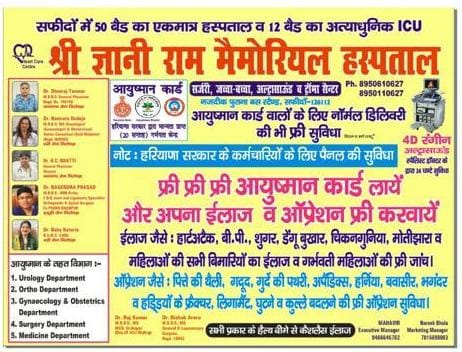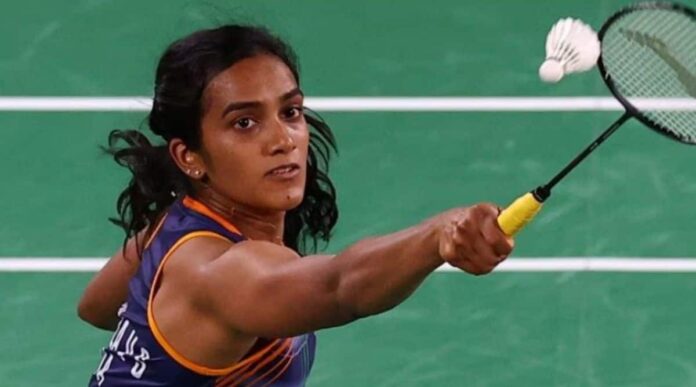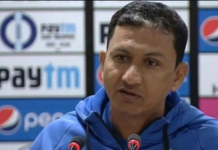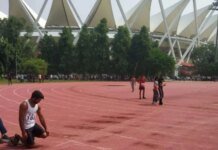The alchemy of a PV Sindhu-Nozomi Okuhara faceoff and long rallies is etched on minds since that glorious August of 2017 when the two played the Glasgow World Championships final. At Basel two years later, Sindhu won a short, snappy summit clash. The last time they met, though – in the All England quarters in 2020 – it was again a three-setter back and forth with long, punishing rallies in slow conditions.
Four years on, and much earlier than they’d like in a tournament week, the two will meet in Round of 32 at Copenhagen. On a lower perch than the pedestal, and with considerably slower limbs now, the two will go another round at the Royal Arena in the Danish capital which winkingly has conspired to give them the slow shuttle conditions that can see them reprise the long rally game once more.
From all accounts, the arena is playing slow, with a slight sideways drift. That should work in the favour of most Indians, and definitely suits Sindhu as these conditions are kinder to her defensively and for shuttle control. “Of course, she needs to play at a better pace than she has been, but if she plays steady and attacks, varying the pace, she holds an advantage against Okuhara whose game she is used to,” says senior coach Vimal Kumar from Bangalore.
While Ratchanok Intanon might prove challenging in the Last 16, Sindhu with her strength can hit through a considerably slowed-down Okuhara. The Japanese former champion was relieved and happy during her emotional comeback to the World Championships stage amidst recurrent injury troubles, winning her opener in straight sets on Monday.
With the slow conditions, Sindhu can use her punch clears to pack off Okuhara to the backcourt, unafraid of the pushes and clears landing out all the time like would happen on fast courts. Then because of her height, she has the lunge to get to the net early and kill off the point after pinning the Japanese back.
Courts in Europe tend to be compact and without air-conditioning, except for the All England arena which is a lot bigger. The Far Eastern courts have wild drifty conditions and can play really fast. Indians, who are good, patient stroke makers prefer the slow set of venues.
Prannoy, Sen win
HS Prannoy, who beat Kalle Koljonen 24-22, 21-10 in the opener on Monday bought himself time via the slow conditions to get a good read on his attacking Finnish opponent, who plays in Denmark often. It showed in the hectic scoreline of the opener where Prannoy saved five set points, before getting a handle on his opponent in an easy second.
“Prannoy is intelligent with drift,” Vimal Kumar said, but it was the slow conditions that gave him some breathing space against the southpaw. “He doesn’t rush into things, saves energy and has excellent court movement. He knows when to push the pace, when to give way. So even if the Finnish player was attacking, Prannoy controlled the shuttle well.”
It’s doable in conditions where the shuttle isn’t whizzing past. Not too comfortable against those that retrieve and counter-attack while he is outpaced, Prannoy can manipulate opponents by retrieving himself in long rallies if the shuttle is slow
The 31-year-old lacked precision on cross courts at the start, with Koljonen making the most of the left-handed angles. But Prannoy charged at the net in the finishing stages of the opener and closed out comfortably in the second. At the 14-6 rally, Koljonen sent the shuttle to Prannoy’s low backhand 9 times, but the Indian was exquisite in defending at that steady, harmless pace of the shuttle.
Once he got a measure of conditions and started hitting the lines, he made Koljonen twist and turn on either flank and finally toyed with him, playing him to the back and front corners. He faces another determined opponent in Chico Wardoyo, the top Indonesian hope left in the draw on Tuesday and the Indian will need to get his deceptive flicks going.
Another Indian who squirms in fast draught conditions is Lakshya Sen, who had an easy 21-12, 21-7 opener against Georges Paul of Mauritius. He runs into a tricky Korean Jeon Hyeok Jin in Round 2 on Tuesday. While the Korean, a runner who defends well, fancies the slower conditions too, Sen has the upper hand. “Lakshya struggles when there’s too much drift, he’s better in slow halls where he has the ability to pull out matches,” Vimal says.
The one Indian who has forever struggled on slow courts is the delectable attacking stroke-maker Kidambi Srikanth. The slow conditions had brought him to a grinding halt at Glasgow Worlds in 2017 against Korean Son Won Ho in an otherwise successful season of four titles.
At Copenhagen, once again, he went down to Kenta Nishimoto, losing 21-14, 21-14 as the Japanese played a patient, controlled game and retrieved almost everything thrown at him.
Srikanth remained impressive at the net, but his big attack from the back kept coming back as Nishimoto could retrieve the shuttle in unhurried conditions, and the former Indian World’s silver medallist would run out of patience in long rallies and make inevitable errors. Physically, Srikanth isn’t as sturdy as Prannoy or Sen currently, and slow conditions demand patient, defensive rigour, which the attacking shuttler didn’t have the wherewithal to sustain.
The conditions are expected to stay the same, given local favourite Viktor Axelsen likes slow shuttles. He can punish anyone who plays short with his downward strokes, and with his height and power has a better finishing kill than anybody else. Japanese Kodai Naraoka and Thai Kunlavut Vitidsarn like the slow shuttles too, since they can pin opponents to the backcourt, and drag them into a run-and-retrieve rut.













